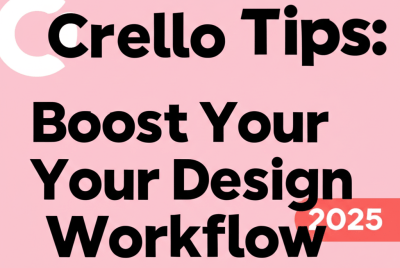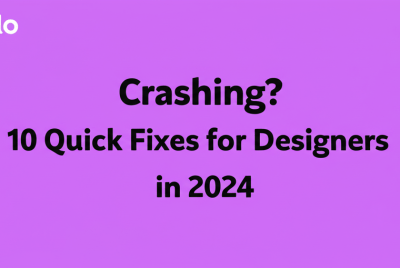The term “red flags” originally comes from the warning signs used in maritime history to signal danger ahead. In the world of relationships, both romantic and professional, these “red flags” serve as alerts for potential trouble. For designers, especially, navigating client relationships can feel a lot like dating. There’s the initial excitement of a new project, the discussions to align goals, and, if things go well, the joy of creating something together. But just like in dating, ignoring red flags with clients can lead to disaster down the line.
When red flags go unnoticed in a relationship, here are three sassy scenarios that often unfold:
- You end up carrying the load alone – much like when one person’s doing all the work while the other just shows up for the fun.
- Boundaries suddenly become nonexistent– those “quick calls” become late-night texts and endless revision requests.
- You’re left wondering if it’s all worth it – just like when you’re questioning why you’re putting in the effort when the other person seems less invested.
When red flags go unnoticed in a designer-client relationship, here are three scenarios that likely unfold:
- You become the “everything” designer – suddenly, you’re not only designing their website but also managing their social media, creating logos for their cousin’s new bakery, and “quickly” drafting up business cards…for free.
- Revision requests never end – what started as a single concept soon morphs into a never-ending loop of “Can we try it this way?” and “One last tweak?” With each round, you realize they’re more indecisive than a client with a buffet of font options.
- Payment turns into a game of hide-and-seek – just when it’s time for that long-awaited invoice to be paid, they go radio silent. Suddenly, they’re “busy” or “out of town,” leaving you chasing down what you rightfully earned.
Ignoring these signs could leave you overworked, underpaid, and wondering why you ever took the project on in the first place. So, let’s dig into these red flags and ensure your client relationships are smooth, not stormy.

Here are three categories of red flags designers should watch for in clients, based on insights from the provided articles:
1. Communication Red Flags
Good communication is the foundation of a successful designer-client relationship. When communication is clear and consistent, expectations are easier to manage, and projects tend to stay on track. However, when a client’s communication style is erratic or overly demanding, it can disrupt the entire project.
Communication patterns to detect early on:
- Vague or Shifting Expectations: If a client can’t clearly define what they want or frequently changes their requirements, you’re likely in for a rocky project where nothing ever quite satisfies them.
- Slow or Nonexistent Responses: Clients who go silent or delay responses often lack urgency or respect for deadlines. This can cause your workflow to bottleneck, pushing you into a crunch to meet deadlines.
- Excessive Micro-Management: A clients need to approve every minor detail, could be a lack of trust in your expertise. This constant interference can stifle your creativity and slow down the project.
2. Budget and Payment Red Flags
Money matters should be straightforward, but some clients make them complicated. Reliable clients respect your rates, pay promptly, and understand the value you bring to the table. On the other hand, clients with payment-related red flags often lead to more hassle than they’re worth.
3 Budget & Payment red flags to watch for:
- Haggling Over Price: If a client is focused on driving your rate down or trying to get discounts right off the bat, it’s a sign they may not truly value your skills. They may also try to sneak in more work without additional pay.
- Payment Delays or Questioning Payment Terms: A client who delays payments or frequently questions invoices could be financially unreliable, leading to cash flow problems and potential unpaid work.
- “Exposure” as Payment: Be cautious of clients who suggest they’ll pay you with “exposure” or “future opportunities” instead of cash. This usually means they aren’t willing to pay fairly for your services.
3. Scope and Project Management Red Flags
A well-defined project scope and structure are essential for smooth project execution. Clients who are disorganized or unclear about their project’s scope can often lead to frustration and burnout as they rely on you to fill in the gaps.
3 Budget & Payment red flags to watch for:
- Scope Creep Without Extra Pay: If a client frequently adds “just one more thing” but refuses to adjust the budget, they likely don’t respect your time and are looking to get as much as possible without paying more.
- Last-Minute Deadlines or Rush Requests: When clients constantly need last-minute work, it suggests poor planning on their part. This often forces you to scramble to meet unrealistic deadlines.
- No Clear Project Structure: Clients who lack a project brief, timeline, or objectives often rely on you to handle everything, which may not be part of your original agreement. This can make project management stressful and lead to misunderstandings.
Still, some designers ignore warning signs

Designers often ignore red flags for several reasons, despite knowing they may lead to complications down the road.
Here are some common motivations behind this tendency:
1. Financial Pressure
Many designers, especially freelancers fail to employ the 7 rules for breaking irregular income and may feel pressured to accept any work that comes their way. Even if a client shows signs of being problematic, the immediate need for cash flow can make designers overlook red flags, hoping that things will somehow work out.
2. Desire to Build a Portfolio
Early in their careers, designers may ignore red flags because they’re eager to build their portfolios. They might take on any project that offers a chance to gain experience or showcase their work, even if it comes at the cost of challenging clients and potentially stressful situations.
3. Fear of Losing Opportunities
Designers sometimes worry that turning down a project due to red flags could harm their reputation or reduce future opportunities. They may feel that saying no will label them as difficult to work with, so they push forward even when it’s clear the client might be in trouble.
4. Optimism and Passion for Design
Passion for the work itself can blind designers to client red flags. They may believe they can handle any situation for the chance to create something amazing or to work on an interesting project, underestimating the toll of managing difficult client relationships.
The Ultimate Takeaway

Each client relationship is like a building brick in a designer’s career. Every project, whether big or small, builds the foundation of your skills, reputation, and portfolio.
Great clients are strong, resourceful bricks—working with them builds your expertise, expands your creative potential, and often leads to valuable referrals.
These relationships energize you, challenge you in meaningful ways, and often lead to future work and professional connections.
On the other hand, bad clients are like faulty, crumbling bricks. According to a recent survey, 63% of freelancers report that problematic clients drain their productivity and motivation—time and energy that could be invested in more constructive, rewarding projects. Worse, once you’ve committed to working with a difficult client, it’s hard to undo the damage. These relationships tend to drain you with endless revisions, boundary-pushing, and payment struggles.
Be selective with the bricks you choose. Each client relationship should be a solid addition to your career foundation—one that helps you build the creative future you envision, rather than pulling you off course.

